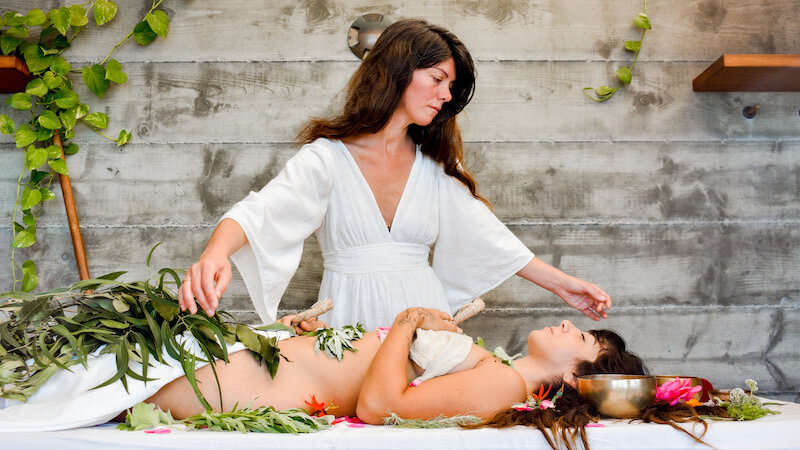
Peggy Horan remembers the Esalen of the late '60s and the birth of the Healing Arts Department, when the institute’s language for somatics and bodywork was first developed. This was the time Esalen massage was being imagined, and they set the groundwork for our alternative services to expand the relationship between healing energies and touch.
"We were exploring that it's okay to be touched. It's okay to have a body," she recalls. That need for touch, connections, and bodily sensation may seem like a self-love/self-care given today, but that was certainly not always true. "This was a pretty new concept after the '50s. That was a tight time in our culture," says Peggy, who has now been teaching massage for over five decades. "We were divorced from the body: The body was a dead end."
James Fadiman, who led Esalen's first workshop with a psychedelic weekend in 1961, remembers that same pervasive, puritanical chill — when visitors at the baths could become overwhelmed by the sight of unclothed bodies out in nature: "They just had enormous emotional rushes at what they had just experienced. Not only seeing other people nude, but being one of them…seeing a bunch of people naked was culturally quite radical."
Loving the body you have and accepting the healing power of touch and movement are concepts and practices that developed holistically for Western curiosity at Esalen. "The idea of celebrating the body and pleasure supported by the freedom of the '60s and '70s became central," says Peggy. "We were at a pivotal point in our culture where inhibitions were dropped, freedom expressed." The liberation of embodied self-love is as crucial today as it was sixty years ago.
What so uniquely distinguishes Esalen Massage® is that it "recognizes that the body releases into pleasurable sensation." Deliberately slow, the bodywork is paced "to set the stage for our natural healing process to emerge.” The style is a melding of Swedish massage and sensory awareness work that invites the receiver into the process. Esalen Massage® addresses the whole person and the whole body, accepting that we move, function, and dance as one unit.

“My shoulder is connected to the tilt of my head, my flexed gluteals, my injured foot,” says Brita Ostrom, a founding member of the massage school. “The result is a sense of overall relaxation that allows us to connect with our larger natural state of mind. We hook up with nature and gain perspective on our problems. The end result could be termed an altered state of consciousness.”
Esalen Massage begins with an opening interview to build trust and rapport. Then, long flowing strokes are employed to elicit awareness and focus on the whole body. The massage approaches tight muscle groups respectfully, following rather than leading the receiver’s relaxation response. “You listen to what is felt as well as what is said,” adds Brita. “The newcomer to Esalen Massage is often surprised that the practitioner doesn’t force their muscles to relax. Instead, the practitioner both verbally and nonverbally invites the client to actively engage in the process of letting go.”
As Esalen attracted practitioners from around the world, different ideas around touch and healing shaped various modalities. "Esalen massage has a rich history and [is an] amalgamation of so many techniques," says Director of Healing Arts Douglas Drummond. This includes the influence of Charlotte Selver and her teachings of sensory awareness, which helped set the unhurried pace. "It became a sensual experience," says Peggy, who also credits Tai Chi, meditation, and Gestalt for the development of today's style.
"We introduced movement of the body, influenced by Feldenkrais and Milton Trager," Peggy adds. "Yoga practice, the energy work of Randolf Stone, reflexology, and, most important, breathwork. [It] all enriched our practice." That evolution continues today; the Healing Arts department, along with its community of guests and leading-edge faculty, is ever-evolving, continually on a quest for innovating healing techniques and ideas — new ways of working with the body. However, one core value always remains.
"We believe loving touch is what heals," says Peggy. "It is about presence, connection, quality of touch; our intention is to help the central nervous system to return to its parasympathetic state. Our flowing rhythmic style, with the ocean soundtrack behind us, and the quality of our loving touch is our true signature. We enter the relationship with our clients with respect, meeting them where they are with no agenda to fix them."
The work, the touch is always about that connection — a relationship. "We are 'working with' not 'on' or 'for' a person,” says Douglas. Inside that dynamic, practitioners can find deep and meaningful reciprocity.
"The work is soulful and feeds us deeply on a spiritual level,” says Peggy. “It is heartful and gratifying to have work that makes people feel better! We receive as we give."
Explore the next few months of Esalen’s Healing Arts and Massage workshops. Then, check out this short video about first-time experiences at the baths to discover what to expect when entering the healing waters. Slip in!
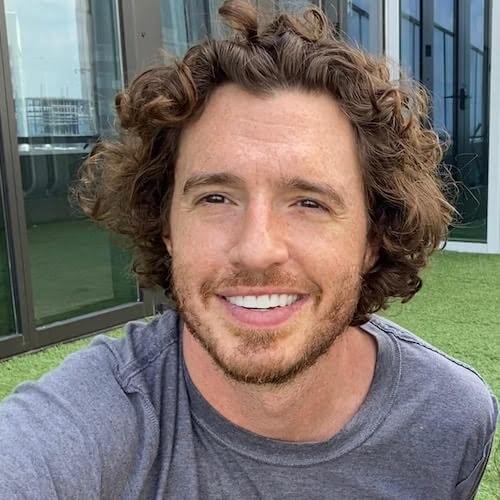
“Remembering to be as self compassionate as I can and praying to the divine that we're all a part of.”
–Aaron
“Prayer, reading, meditation, walking.”
–Karen
“Erratically — which is an ongoing stream of practice to find peace.”
–Charles
“Try on a daily basis to be kind to myself and to realize that making mistakes is a part of the human condition. Learning from our mistakes is a journey. But it starts with compassion and caring. First for oneself.”
–Steve
“Physically: aerobic exercise, volleyball, ice hockey, cycling, sailing. Emotionally: unfortunately I have to work to ‘not care’ about people or situations which may end painfully. Along the lines of ‘attachment is the source of suffering’, so best to avoid it or limit its scope. Sad though because it could also be the source of great joy. Is it worth the risk?“
–Rainer
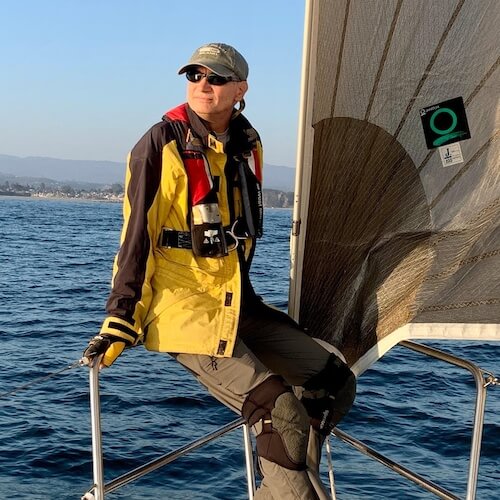

“It's time for my heart to be nurtured on one level yet contained on another. To go easy on me and to allow my feelings to be validated, not judged harshly. On the other hand, to let the heart rule with equanimity and not lead the mind and body around like a master.”
–Suzanne
“I spend time thinking of everything I am grateful for, and I try to develop my ability to express compassion for myself and others without reservation. I take time to do the things I need to do to keep myself healthy and happy. This includes taking experiential workshops, fostering relationships, and participating within groups which have a similar interest to become a more compassionate and fulfilled being.“
–Peter
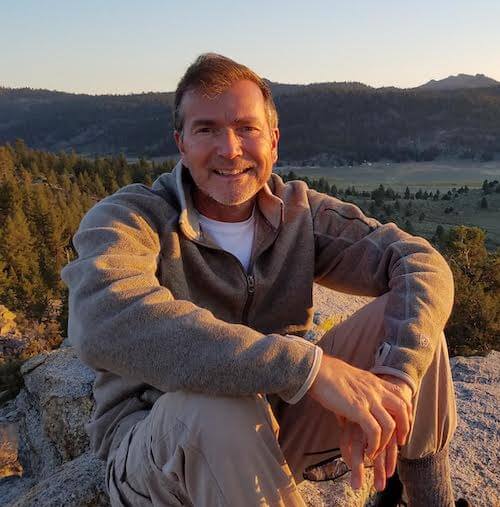
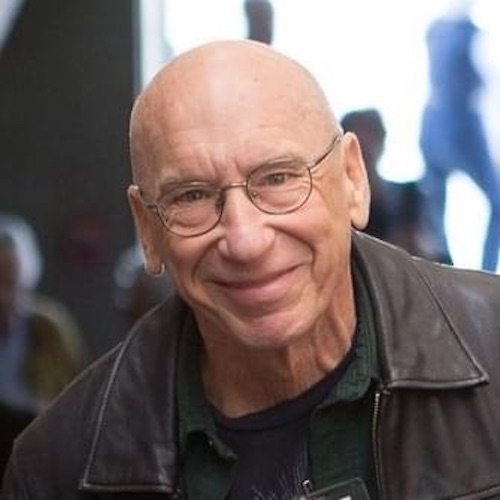
“Self-forgiveness for my own judgments. And oh yeah, coming to Esalen.”
–David B.
“Hmm, this is a tough one! I guess I take care of my heart through fostering relationships with people I feel connected to. Spending quality time with them (whether we're on the phone, through messages/letters, on Zoom, or in-person). Being there for them, listening to them, sharing what's going on with me, my struggles and my successes... like we do in the Esalen weekly Friends of Esalen Zoom sessions!”
–Lori

“I remind myself in many ways of the fact that " Love is all there is!" LOVE is the prize and this one precious life is the stage we get to learn our lessons. I get out into nature, hike, camp, river kayak, fly fish, garden, I create, I dance (not enough!), and I remain grateful for each day, each breath, each moment. Being in the moment, awake, and remembering the gift of life and my feeling of gratitude for all of creation.”
–Steven
“My physical heart by limiting stress and eating a heart-healthy diet. My emotional heart by staying in love with the world and by knowing that all disappointment and loss will pass.“
–David Z.
Today, September 29, is World Heart Day. Strike up a conversation with your own heart and as you feel comfortable, encourage others to do the same. As part of our own transformations and self-care, we sometimes ask for others to illuminate and enliven our hearts or speak our love language.
What if we could do this for ourselves too, even if just for today… or to start a heart practice, forever?

Peggy Horan remembers the Esalen of the late '60s and the birth of the Healing Arts Department, when the institute’s language for somatics and bodywork was first developed. This was the time Esalen massage was being imagined, and they set the groundwork for our alternative services to expand the relationship between healing energies and touch.
"We were exploring that it's okay to be touched. It's okay to have a body," she recalls. That need for touch, connections, and bodily sensation may seem like a self-love/self-care given today, but that was certainly not always true. "This was a pretty new concept after the '50s. That was a tight time in our culture," says Peggy, who has now been teaching massage for over five decades. "We were divorced from the body: The body was a dead end."
James Fadiman, who led Esalen's first workshop with a psychedelic weekend in 1961, remembers that same pervasive, puritanical chill — when visitors at the baths could become overwhelmed by the sight of unclothed bodies out in nature: "They just had enormous emotional rushes at what they had just experienced. Not only seeing other people nude, but being one of them…seeing a bunch of people naked was culturally quite radical."
Loving the body you have and accepting the healing power of touch and movement are concepts and practices that developed holistically for Western curiosity at Esalen. "The idea of celebrating the body and pleasure supported by the freedom of the '60s and '70s became central," says Peggy. "We were at a pivotal point in our culture where inhibitions were dropped, freedom expressed." The liberation of embodied self-love is as crucial today as it was sixty years ago.
What so uniquely distinguishes Esalen Massage® is that it "recognizes that the body releases into pleasurable sensation." Deliberately slow, the bodywork is paced "to set the stage for our natural healing process to emerge.” The style is a melding of Swedish massage and sensory awareness work that invites the receiver into the process. Esalen Massage® addresses the whole person and the whole body, accepting that we move, function, and dance as one unit.

“My shoulder is connected to the tilt of my head, my flexed gluteals, my injured foot,” says Brita Ostrom, a founding member of the massage school. “The result is a sense of overall relaxation that allows us to connect with our larger natural state of mind. We hook up with nature and gain perspective on our problems. The end result could be termed an altered state of consciousness.”
Esalen Massage begins with an opening interview to build trust and rapport. Then, long flowing strokes are employed to elicit awareness and focus on the whole body. The massage approaches tight muscle groups respectfully, following rather than leading the receiver’s relaxation response. “You listen to what is felt as well as what is said,” adds Brita. “The newcomer to Esalen Massage is often surprised that the practitioner doesn’t force their muscles to relax. Instead, the practitioner both verbally and nonverbally invites the client to actively engage in the process of letting go.”
As Esalen attracted practitioners from around the world, different ideas around touch and healing shaped various modalities. "Esalen massage has a rich history and [is an] amalgamation of so many techniques," says Director of Healing Arts Douglas Drummond. This includes the influence of Charlotte Selver and her teachings of sensory awareness, which helped set the unhurried pace. "It became a sensual experience," says Peggy, who also credits Tai Chi, meditation, and Gestalt for the development of today's style.
"We introduced movement of the body, influenced by Feldenkrais and Milton Trager," Peggy adds. "Yoga practice, the energy work of Randolf Stone, reflexology, and, most important, breathwork. [It] all enriched our practice." That evolution continues today; the Healing Arts department, along with its community of guests and leading-edge faculty, is ever-evolving, continually on a quest for innovating healing techniques and ideas — new ways of working with the body. However, one core value always remains.
"We believe loving touch is what heals," says Peggy. "It is about presence, connection, quality of touch; our intention is to help the central nervous system to return to its parasympathetic state. Our flowing rhythmic style, with the ocean soundtrack behind us, and the quality of our loving touch is our true signature. We enter the relationship with our clients with respect, meeting them where they are with no agenda to fix them."
The work, the touch is always about that connection — a relationship. "We are 'working with' not 'on' or 'for' a person,” says Douglas. Inside that dynamic, practitioners can find deep and meaningful reciprocity.
"The work is soulful and feeds us deeply on a spiritual level,” says Peggy. “It is heartful and gratifying to have work that makes people feel better! We receive as we give."
Explore the next few months of Esalen’s Healing Arts and Massage workshops. Then, check out this short video about first-time experiences at the baths to discover what to expect when entering the healing waters. Slip in!

“Remembering to be as self compassionate as I can and praying to the divine that we're all a part of.”
–Aaron
“Prayer, reading, meditation, walking.”
–Karen
“Erratically — which is an ongoing stream of practice to find peace.”
–Charles
“Try on a daily basis to be kind to myself and to realize that making mistakes is a part of the human condition. Learning from our mistakes is a journey. But it starts with compassion and caring. First for oneself.”
–Steve
“Physically: aerobic exercise, volleyball, ice hockey, cycling, sailing. Emotionally: unfortunately I have to work to ‘not care’ about people or situations which may end painfully. Along the lines of ‘attachment is the source of suffering’, so best to avoid it or limit its scope. Sad though because it could also be the source of great joy. Is it worth the risk?“
–Rainer


“It's time for my heart to be nurtured on one level yet contained on another. To go easy on me and to allow my feelings to be validated, not judged harshly. On the other hand, to let the heart rule with equanimity and not lead the mind and body around like a master.”
–Suzanne
“I spend time thinking of everything I am grateful for, and I try to develop my ability to express compassion for myself and others without reservation. I take time to do the things I need to do to keep myself healthy and happy. This includes taking experiential workshops, fostering relationships, and participating within groups which have a similar interest to become a more compassionate and fulfilled being.“
–Peter


“Self-forgiveness for my own judgments. And oh yeah, coming to Esalen.”
–David B.
“Hmm, this is a tough one! I guess I take care of my heart through fostering relationships with people I feel connected to. Spending quality time with them (whether we're on the phone, through messages/letters, on Zoom, or in-person). Being there for them, listening to them, sharing what's going on with me, my struggles and my successes... like we do in the Esalen weekly Friends of Esalen Zoom sessions!”
–Lori

“I remind myself in many ways of the fact that " Love is all there is!" LOVE is the prize and this one precious life is the stage we get to learn our lessons. I get out into nature, hike, camp, river kayak, fly fish, garden, I create, I dance (not enough!), and I remain grateful for each day, each breath, each moment. Being in the moment, awake, and remembering the gift of life and my feeling of gratitude for all of creation.”
–Steven
“My physical heart by limiting stress and eating a heart-healthy diet. My emotional heart by staying in love with the world and by knowing that all disappointment and loss will pass.“
–David Z.
Today, September 29, is World Heart Day. Strike up a conversation with your own heart and as you feel comfortable, encourage others to do the same. As part of our own transformations and self-care, we sometimes ask for others to illuminate and enliven our hearts or speak our love language.
What if we could do this for ourselves too, even if just for today… or to start a heart practice, forever?

Peggy Horan remembers the Esalen of the late '60s and the birth of the Healing Arts Department, when the institute’s language for somatics and bodywork was first developed. This was the time Esalen massage was being imagined, and they set the groundwork for our alternative services to expand the relationship between healing energies and touch.
"We were exploring that it's okay to be touched. It's okay to have a body," she recalls. That need for touch, connections, and bodily sensation may seem like a self-love/self-care given today, but that was certainly not always true. "This was a pretty new concept after the '50s. That was a tight time in our culture," says Peggy, who has now been teaching massage for over five decades. "We were divorced from the body: The body was a dead end."
James Fadiman, who led Esalen's first workshop with a psychedelic weekend in 1961, remembers that same pervasive, puritanical chill — when visitors at the baths could become overwhelmed by the sight of unclothed bodies out in nature: "They just had enormous emotional rushes at what they had just experienced. Not only seeing other people nude, but being one of them…seeing a bunch of people naked was culturally quite radical."
Loving the body you have and accepting the healing power of touch and movement are concepts and practices that developed holistically for Western curiosity at Esalen. "The idea of celebrating the body and pleasure supported by the freedom of the '60s and '70s became central," says Peggy. "We were at a pivotal point in our culture where inhibitions were dropped, freedom expressed." The liberation of embodied self-love is as crucial today as it was sixty years ago.
What so uniquely distinguishes Esalen Massage® is that it "recognizes that the body releases into pleasurable sensation." Deliberately slow, the bodywork is paced "to set the stage for our natural healing process to emerge.” The style is a melding of Swedish massage and sensory awareness work that invites the receiver into the process. Esalen Massage® addresses the whole person and the whole body, accepting that we move, function, and dance as one unit.

“My shoulder is connected to the tilt of my head, my flexed gluteals, my injured foot,” says Brita Ostrom, a founding member of the massage school. “The result is a sense of overall relaxation that allows us to connect with our larger natural state of mind. We hook up with nature and gain perspective on our problems. The end result could be termed an altered state of consciousness.”
Esalen Massage begins with an opening interview to build trust and rapport. Then, long flowing strokes are employed to elicit awareness and focus on the whole body. The massage approaches tight muscle groups respectfully, following rather than leading the receiver’s relaxation response. “You listen to what is felt as well as what is said,” adds Brita. “The newcomer to Esalen Massage is often surprised that the practitioner doesn’t force their muscles to relax. Instead, the practitioner both verbally and nonverbally invites the client to actively engage in the process of letting go.”
As Esalen attracted practitioners from around the world, different ideas around touch and healing shaped various modalities. "Esalen massage has a rich history and [is an] amalgamation of so many techniques," says Director of Healing Arts Douglas Drummond. This includes the influence of Charlotte Selver and her teachings of sensory awareness, which helped set the unhurried pace. "It became a sensual experience," says Peggy, who also credits Tai Chi, meditation, and Gestalt for the development of today's style.
"We introduced movement of the body, influenced by Feldenkrais and Milton Trager," Peggy adds. "Yoga practice, the energy work of Randolf Stone, reflexology, and, most important, breathwork. [It] all enriched our practice." That evolution continues today; the Healing Arts department, along with its community of guests and leading-edge faculty, is ever-evolving, continually on a quest for innovating healing techniques and ideas — new ways of working with the body. However, one core value always remains.
"We believe loving touch is what heals," says Peggy. "It is about presence, connection, quality of touch; our intention is to help the central nervous system to return to its parasympathetic state. Our flowing rhythmic style, with the ocean soundtrack behind us, and the quality of our loving touch is our true signature. We enter the relationship with our clients with respect, meeting them where they are with no agenda to fix them."
The work, the touch is always about that connection — a relationship. "We are 'working with' not 'on' or 'for' a person,” says Douglas. Inside that dynamic, practitioners can find deep and meaningful reciprocity.
"The work is soulful and feeds us deeply on a spiritual level,” says Peggy. “It is heartful and gratifying to have work that makes people feel better! We receive as we give."
Explore the next few months of Esalen’s Healing Arts and Massage workshops. Then, check out this short video about first-time experiences at the baths to discover what to expect when entering the healing waters. Slip in!

“Remembering to be as self compassionate as I can and praying to the divine that we're all a part of.”
–Aaron
“Prayer, reading, meditation, walking.”
–Karen
“Erratically — which is an ongoing stream of practice to find peace.”
–Charles
“Try on a daily basis to be kind to myself and to realize that making mistakes is a part of the human condition. Learning from our mistakes is a journey. But it starts with compassion and caring. First for oneself.”
–Steve
“Physically: aerobic exercise, volleyball, ice hockey, cycling, sailing. Emotionally: unfortunately I have to work to ‘not care’ about people or situations which may end painfully. Along the lines of ‘attachment is the source of suffering’, so best to avoid it or limit its scope. Sad though because it could also be the source of great joy. Is it worth the risk?“
–Rainer


“It's time for my heart to be nurtured on one level yet contained on another. To go easy on me and to allow my feelings to be validated, not judged harshly. On the other hand, to let the heart rule with equanimity and not lead the mind and body around like a master.”
–Suzanne
“I spend time thinking of everything I am grateful for, and I try to develop my ability to express compassion for myself and others without reservation. I take time to do the things I need to do to keep myself healthy and happy. This includes taking experiential workshops, fostering relationships, and participating within groups which have a similar interest to become a more compassionate and fulfilled being.“
–Peter


“Self-forgiveness for my own judgments. And oh yeah, coming to Esalen.”
–David B.
“Hmm, this is a tough one! I guess I take care of my heart through fostering relationships with people I feel connected to. Spending quality time with them (whether we're on the phone, through messages/letters, on Zoom, or in-person). Being there for them, listening to them, sharing what's going on with me, my struggles and my successes... like we do in the Esalen weekly Friends of Esalen Zoom sessions!”
–Lori

“I remind myself in many ways of the fact that " Love is all there is!" LOVE is the prize and this one precious life is the stage we get to learn our lessons. I get out into nature, hike, camp, river kayak, fly fish, garden, I create, I dance (not enough!), and I remain grateful for each day, each breath, each moment. Being in the moment, awake, and remembering the gift of life and my feeling of gratitude for all of creation.”
–Steven
“My physical heart by limiting stress and eating a heart-healthy diet. My emotional heart by staying in love with the world and by knowing that all disappointment and loss will pass.“
–David Z.
Today, September 29, is World Heart Day. Strike up a conversation with your own heart and as you feel comfortable, encourage others to do the same. As part of our own transformations and self-care, we sometimes ask for others to illuminate and enliven our hearts or speak our love language.
What if we could do this for ourselves too, even if just for today… or to start a heart practice, forever?